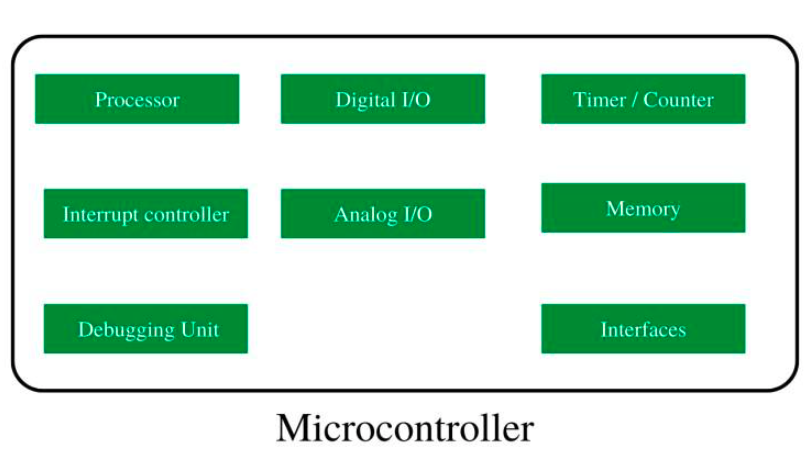Difference Between FPGA and Microcontroller
Last Updated :
24 Sep, 2024
In the category of embedded systems, on one hand we have FPGA (Field Programmable Gate Arrays) and microcontrollers on the other hand, though both are important in the systems but are developed for different purpose. Supplied here is Information on this paper that will assist engineers and developers in the selection of the best option between the two types of heat exchange equipment. FPGAs provide more flexibility and parallel processing capability as compared cost effective microcontroller which are good for simple applications. Now let us explain the difference between FPGA and microcontroller in a more elaborate manner.
What is FPGA(Field Programmable Gate Array)?
FPGA stands for Field Programmable Gate Array. It is a reprogrammable chip which is a collection of hundreds of thousands of logic gates that connects internally together to build a complex digital circuit. Basically, FPGA is an integrated circuit that can be programmed by the user to capture the logic.
 FPGA
FPGAAdvantages of FPGA (Field Programmable Gate Array)
- It is capable of capturing 100,000+ designed gates.
- It provides standard interfaces.
- It also provides built-in memories, processor cores, and many more.
- It is cheap for small volumes because one does not need to pay for fabrication.
- It is flexible.
Disadvantages of FPGA (Field Programmable Gate Array)
- For large volumes, FPGA is quite expensive.
- It has limited size options.
- Limited performance.
What is a Microcontroller?
Microcontroller is an autonomous computer system reduced in size which is used to control certain operations that are embedded in a system. It has RAM, ROM, I/O ports and peripherals all on a single chip and it is ideal for controlling devices in different areas of application which include home appliances, automotive systems and many more industrial machines. Microcontrollers are set using assembly language or C and other upper level languages and are sequential control microprocessors.
 Microcontroller
MicrocontrollerAdvantages of Microcontrollers
- They are simple to program.
- They are affordable.
- Microcontrollers are cost-effective.
Disadvantages of Microcontrollers
- They are not ideal for complex applications and can work on only simple applications.
- Hardware is limited.
- The processing power of microcontrollers is slow.
Difference between FPGA and Microcontroller
| FPGA | Microcontroller |
|---|
| It is based on hardware connection or wiring through programming. | It is based on software programming to execute the instruction. |
| It does not have a fixed hardware structure. | It has a fixed hardware structure. |
| It supports Hardware Description Language. | It supports C, C++, C#, and many more. |
| No portability across tools. | Open-source tools are available. |
| Processing power is high. | Processing power is low. |
| It require more skill to use. | Easy to use. |
| Ideal for more complex applications. | Not always ideal for complex applications. |
| It is costly. | They are affordable. |
| It focuses on parallel execution. | It focuses on serial execution. |
Conclusion
Again, this is the reason why deciding between an FPGA and a microcontroller depends on the certain project. Whether the application ought to be processed in high-speed, in parallel or whether the design is ready for custom hardware, the FPGA is most suitable. But for basic, cheap utilitarian operations, which do not need extensive calculations, there is no better solution than a microcontroller. Each option has its positive and negative aspects, and, by choosing the most appropriate solution, the performance and efficiency of the work with increase, as well as saving money.
Similar Reads
Difference Between 8 Bit and 16 Bit Microcontroller Microcontrollers are small, low-power computers designed for specific tasks. They are widely used in embedded systems such as household appliances, automotive systems, medical devices, and industrial control systems. Microcontrollers are available in various configurations and architectures, and the
5 min read
Difference between PIC and MSP430 A Micro-controller is the single Integrated Circuit IC which is comparable to the little stand alone computer and it is designed to govern the specific operation in the embedded system. A micro controller contains the processing unit and small amount of a memory ROM, RAM and few I/O ports for periph
5 min read
Difference between PIC and ARM Microcontrollers are the core of the embedded systems and are capable of providing numerous solutions on the basis of the involvement and necessity of the application. Some of the most widely utilized microcontrollers in the current industries include PIC (Peripheral Interface Controller) as well as
6 min read
Difference between Hardware and Processor When it comes to understanding the internal workings of a computer, two key terms often come up: ,hardware and processor. Even though they are connected, these terms stand for various facets of computer system. Hardware in computers include the physical parts of a computer while the processor or CPU
5 min read
Difference between AVR and PIC A microcontroller is a single Integrated Circuit (IC) which is comparable to a little stand alone computer and it is designed to perform the specific tasks of embedded systems. A microcontroller contains processing unit and small amount of memory (ROM, RAM etc.), few I/O ports for peripherals, timer
5 min read
Difference between Hardware and Middleware Hardware and Middleware are both parts of a Computer. Hardware is the combination of physical components in a computer system that perform various tasks such as input, output, processing, and many more. Middleware is the part of software that is the communication medium between application and opera
4 min read